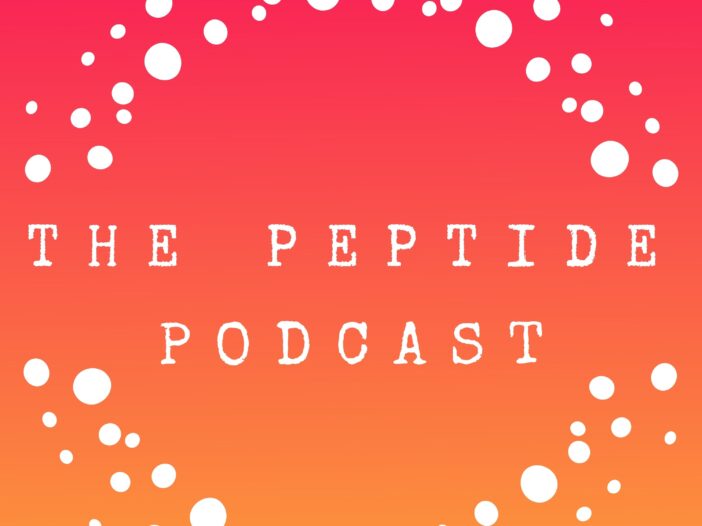
Back pain is a common health condition affecting millions of people worldwide, decreasing their quality of life and productivity. Traditional treatments often provide temporary relief, prompting the search for innovative therapies. Peptide therapies have shown promising results in addressing back pain.
In this podcast, we’ll talk about the common causes of back pain, traditional treatments used to treat back pain, and peptide therapies used for back pain management.
What causes back pain?
If you’ve had lower back pain, you know how debilitating it can be (e.g., affecting your quality of life and making it hard to work, exercise, or partake in extracurricular activities). Often, the exact cause of pain isn’t understood, but most cases of low back pain come on suddenly and go away within one month. Typically, the pain comes from the spine or the ligaments and muscles around the spine. This is common in those with muscle strains or sprains of the muscles or ligaments around the spine from mild trauma or repetitive physical activity.
People who have serious medical conditions can also experience back pain. A few common causes could be arthritis of the spine (spondylosis), herniated disc (bulging disc), spinal stenosis (when the space around the spinal cord narrows, causing pain, numbness, or tingling in the legs.
How can I make my back pain stop?
If your back is bothering you, there are some treatments that you can try at home to help lessen the pain.
Non-strenuous activity: Although you’re in pain and you may want to stay in bed when you have back pain, it’s important to know that this can make the pain worse. It helps to try activities like walking and gentle stretching.
Over-the-counter (OTC) medications: You might be able to help relieve acute back pain with OTC anti-inflammatory medications like naproxen or ibuprofen. These medications block the body’s production of prostaglandins (natural chemicals) that trigger pain, swelling, and inflammation.
Heat or ice: It’s hard to know when to use heat vs. ice for back pain. The rule of thumb is to start with ice when your back hurts after a minor injury. You can use ice packs, cold towels, and ice baths. You can try this for 2 days and then move to heat. Heat helps with pain by increasing blood flow to help relax your muscles and help the body to repair injured tissue. Heat will not only help with pain but can also help with stiffness to loosen up your back muscles. This, in turn, helps with your mobility to get you back to living a normal life. For heat, you can apply hot water bottles to the area of pain. You can also use hot towels, heating pads, and saunas.
If you have back pain that lasts more than one month or occurs with symptoms like severe numbness or weakness in the legs, inability to urinate, or numbness in the groin, talk to a healthcare provider. Never try to treat back pain at home if your pain is caused by a major trauma or injury (e.g., car accident or fall) or a previous spinal procedure (e.g., surgery or injections).
Peptides for back pain
BPC-157- BPC 157, or Body Protection Compound 157, is a peptide derived from stomach acid. It works by decreasing inflammation and increasing blood flow to damaged tissues. It speeds up the healing of wounds, tendons, ligaments, bone injuries, your nervous system, and even the digestive tract.
LL-37- LL-37, a naturally occurring antimicrobial peptide, exhibits potent anti-inflammatory properties. Chronic back pain often results from inflammation of spinal nerves and surrounding tissues. LL-37 mitigates inflammation, providing relief to patients suffering from conditions like sciatica and herniated discs. By modulating the immune response, LL-37 promotes healing and reduces pain.
Thymosin Beta-4 (TB4)- Thymosin Beta-4 is a peptide used for cellular regeneration. It plays a pivotal role in tissue repair and wound healing. In the context of back pain, TB4 aids in regenerating damaged spinal discs and muscles, offering long-term relief. It works by binding actin (proteins that make up 10% of the total proteins in cells). Actin helps with cell division, signaling, and shape. It also speeds up the rate of new tissue growth and new blood vessel formation. TB4 also helps wounds heal.
Melanocortin Peptides- Melanocortin peptides, including Melanotan II, have shown promise in managing chronic pain conditions. These peptides work by modulating the body’s pain perception pathways, providing relief to individuals suffering from persistent back pain. By interacting with melanocortin receptors, these peptides alter neurotransmitter levels, effectively reducing pain signals transmitted to the brain.
Substance P Inhibitors- Substance P is a neurotransmitter associated with pain perception. Peptide therapies targeting Substance P receptors can effectively alleviate back pain by inhibiting nerve sensitivity. By blocking these receptors, these peptides reduce the transmission of pain signals, offering relief to patients with conditions like neuropathic back pain.
Peptide therapies represent a groundbreaking approach to back pain management, offering hope to individuals whose lives are hindered by chronic discomfort. As research in this field continues to advance, peptide therapies are set to revolutionize the way we treat back pain, providing a brighter future for millions who suffer from back pain.
Note: Always consult with a healthcare professional before undergoing any peptide therapy to ensure safe and effective treatment.
Thanks again for listening to The Peptide Podcast, we love having you as part of our community. If you love this podcast, please share it with your friends and family on social media, and have a happy, healthy week!
Pro Tips
We’re huge advocates of using daily greens in your routine to help with gut, skin, nail, bone, and joint health. We take AG1 (athletic greens) every day. Not only does it have vitamins, minerals, and a diverse range of whole-food sourced ingredients, but it also has probiotics to promote a healthy gut microbiome and adaptogens to help with focus and mood balance. It’s vegan, paleo, and keto-friendly.
Leave a Reply